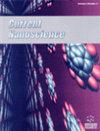治疗类风湿关节炎的新方法:展望
IF 1.5
4区 材料科学
Q4 BIOTECHNOLOGY & APPLIED MICROBIOLOGY
引用次数: 0
摘要
背景:类风湿性关节炎(RA)是一种炎症性疾病,会导致关节肿胀、滑膜增厚、关节骨吸收和急性损伤,并增加死亡率。由于近年来治疗方法的改进,大大延缓了病程,许多 RA 患者现在生活得更好了。然而,仍有相当一部分患者对现有的治疗方法没有反应或产生了抗药性。纳米技术正成为一种越来越有趣的工具,用于研究从治疗各种疾病状态到解决复杂病症的新策略。目标:这项工作的主要目标是概述有关多功能纳米载体的研究活动,如聚合物胶束、纳米颗粒、脂质体等,这些载体具有可控/持续的药物释放模式,可提高给药效果。方法:本综述主要关注封装抗风湿药物、酶、基因、植物成分等各种纳米载体的新兴给药策略。它还包括有关治疗 RA 的专利和临床试验的最新进展。研究结果:在最近的大多数研究中,以纳米载体为基础的给药方法受到了全世界的关注,并由此开发出了治疗 RA 的新方法。更好地了解病理生理学和信号通路有助于选择抗风湿药物。将活性分子封装到新型纳米载体中可提高不溶性药物的溶解度。它利用各种靶向策略,如主动、被动或仿生靶向和刺激响应载体系统,限制药物暴露于非炎症部位,以增强给药机制。结论本文简要介绍了目前使用纳米载体技术治疗 RA 的方法,并对纳米治疗方案的潜在改进进行了预测。本文章由计算机程序翻译,如有差异,请以英文原文为准。
Emerging Approaches for the Treatment of Rheumatoid Arthritis: An Outlook
Background: Rheumatoid arthritis (RA) is an inflammatory disease that causes pannus, thickened synovium, joint bone reabsorption, and acute impairment, and increases the death rate. Many people with RA now live better lives as a result of recent improvements in treatment, which have dramatically slowed the disease's course. However, a significant portion of patients continue to either be non-responsive to existing treatments or have developed a resistance to them. Nanotechnology is becoming a more and more intriguing tool for investigating novel strategies, ranging from treating various disease states to tackling complicated conditions. Objective: The primary goal of the work was to outline the research activities on versatile nanocarriers, like polymeric micelles, nanoparticles, liposomes, etc., with controlled/sustained drug release patterns fabricated to elevate the effectiveness of drug delivery. Method: This review mainly focuses on emerging strategies to deliver various nanocarriers encapsulating anti-rheumatic drugs, enzymes, genes, phytoconstituents, etc. It also includes up-todate progress regarding patents and clinical trials filed for the treatment of RA. Results: In most of the recent studies, nanocarrier-based drug delivery has gained attention worldwide and led to the development of new approaches for treating RA. A better understanding of pathophysiology and signalling pathways helps to select the antirheumatic drug. The encapsulation of active moiety into the novel nanocarrier enhances the solubility of insoluble drugs. It restricts the exposure of the drug to the non-inflamed site using various targeting strategies, like active, passive, or biomimetic targeting and stimuli-responsive carrier systems to enhance the drug delivery mechanism. Conclusion: A brief description of current RA treatments using nanocarrier technology is provided in this paper, along with predictions for potential enhancements to the nanotherapeutic regimen.
求助全文
通过发布文献求助,成功后即可免费获取论文全文。
去求助
来源期刊

Current Nanoscience
工程技术-材料科学:综合
CiteScore
3.50
自引率
6.70%
发文量
83
审稿时长
4.4 months
期刊介绍:
Current Nanoscience publishes (a) Authoritative/Mini Reviews, and (b) Original Research and Highlights written by experts covering the most recent advances in nanoscience and nanotechnology. All aspects of the field are represented including nano-structures, nano-bubbles, nano-droplets and nanofluids. Applications of nanoscience in physics, material science, chemistry, synthesis, environmental science, electronics, biomedical nanotechnology, biomedical engineering, biotechnology, medicine and pharmaceuticals are also covered. The journal is essential to all researches involved in nanoscience and its applied and fundamental areas of science, chemistry, physics, material science, engineering and medicine.
Current Nanoscience also welcomes submissions on the following topics of Nanoscience and Nanotechnology:
Nanoelectronics and photonics
Advanced Nanomaterials
Nanofabrication and measurement
Nanobiotechnology and nanomedicine
Nanotechnology for energy
Sensors and actuator
Computational nanoscience and technology.
 求助内容:
求助内容: 应助结果提醒方式:
应助结果提醒方式:


